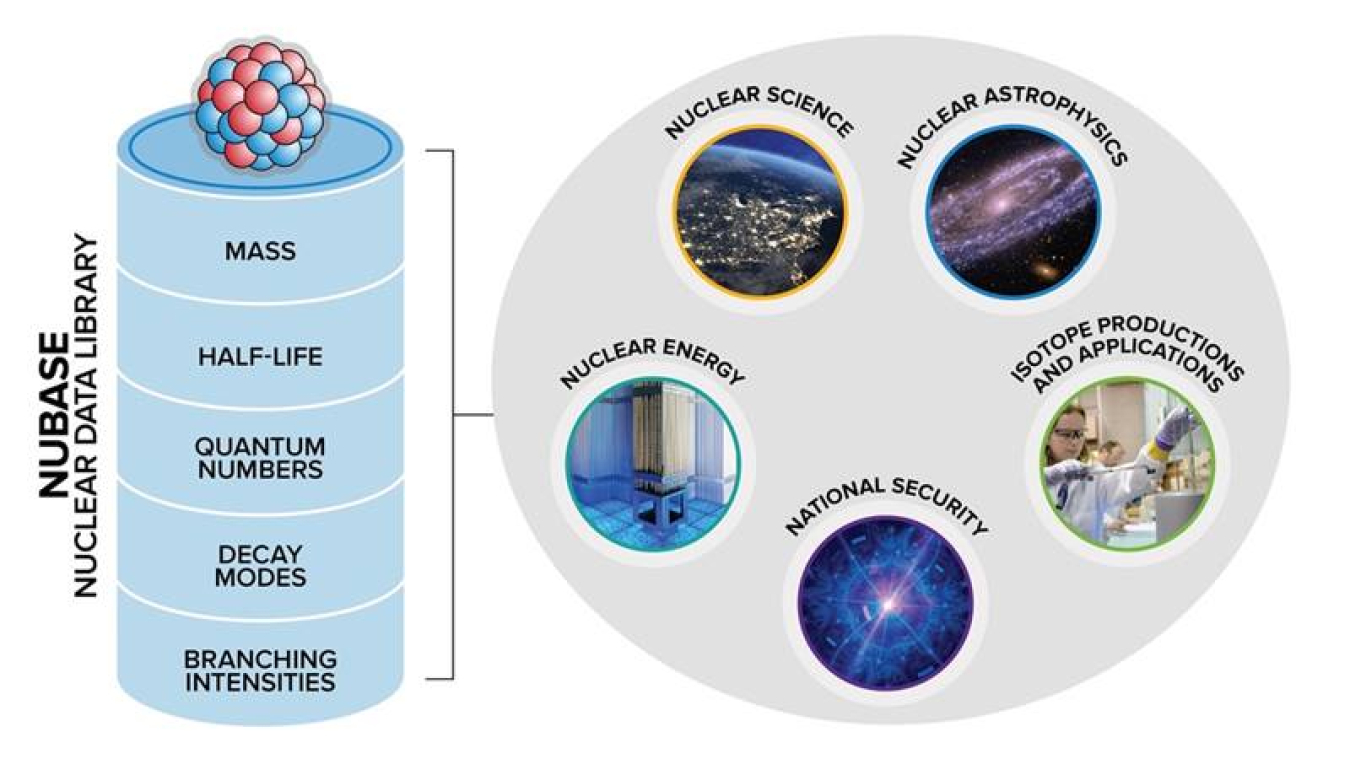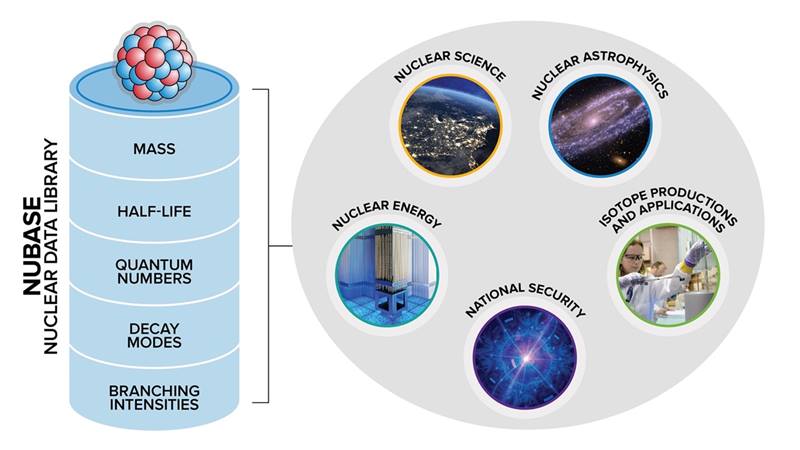
The Science
Atomic nuclei exist in the form of isotopes that differ in how many neutrons and protons they have. Today, scientists know of more than 3,300 isotopes. While most isotopes are produced artificially in scientific laboratories, many are created in stars and stellar explosions. A research team has now compiled experimental data for all known nuclei. This includes the isotopes’ main nuclear physics properties, such as mass, quantum numbers, half-life, decay modes, and branching intensities. The researchers evaluated all the data and reported recommended values and their uncertainties. The results are available in the NUBASE library, which also includes estimates for isotopes that are predicted by theoretical models but that scientists have not yet observed.
The Impact
The data in the NUBASE library cover each nucleus in its ground state (its lowest energy level) and its isomeric states (higher energy levels that live longer than what is typical for other excited levels). Well-defined and credible nuclear data for these states are key to scientists’ understanding of the Universe. The recommended nuclear data are also important in many applications. They are relevant to nearly every field of nuclear research, from basic science and astrophysics to energy, national security, and medicine.
Summary
Reliable information on the basic properties of nuclei is a fundamental building block for research in modern nuclear structure and astrophysics. Researchers need good-quality nuclear data formulated and recommended through a speedy assessment and incorporation of new and improved measurements. A sound understanding and accurate quantification of basic nuclear properties help drive advances in many areas.
The current NUBASE nuclear data library contains recommended values and uncertainties for nuclear physics characteristics of all nuclei in their ground and isomeric states. It incorporates a variety of experimental data produced at world-wide nuclear physics facilities. The entries are drawn from primary sources such as journal articles and from secondary sources such as laboratory reports and conference proceedings. Each data point includes pertinent bibliographic details. The entry data are critically evaluated, discrepant results are dismissed, and statistical analysis is applied when recommending the final values. Where experimental data are lacking, estimates are given based on trends in the behavior of the properties for neighboring nuclei. The recommended data are useful for applications in fundamental science, astrophysics, power production, space exploration, national security, human health, and environmental protection.
Contact
Filip G. Kondev
Argonne National Laboratory
[email protected]
Funding
This research was supported by the Department of Energy Office of Science, Office of Nuclear Physics.
Publications
Kondev, F.G., et al., The NUBASE2020 evaluation of nuclear physics properties. Chinese Physics C 45, 030001 (2021). [DOI: 10.1088/1674-1137/abddae]
Related Links
Argonne physicist recognized for “Top Cited Paper” by Institute of Physics, Argonne National Laboratory news.
Scraped from https://www.sourcearu.com




